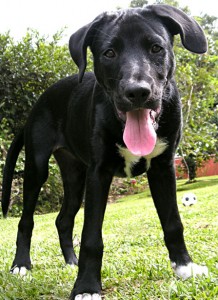High Cholesterol in Dogs
Hyperlipidemia is a
condition where the amount of fats (also called lipids) in the blood are
elevated. It is responsible for the deaths of almost 50,000+ Americans
each year. It is also the cause of the diet change and lipid-lowering
medications of million of adults just to lower their cholesterol into
safe levels. However, despite the attention people have given to this
condition, it has been overlooked in pets. This is because it is rare
for dogs and cats to develop heart disease
related to hyperlipidemia like people. However, hyperlipidemia has been
associated with serious and sometimes fatal ailments such as pet
obesity, pancreatitis, vision and neurologic problems. Although both
dogs and cat can acquire hyperlipidemia, it is more common in dogs.
Causes of Hyperlipidermia
- Increased absorption of triglycerides/cholesterol - after having a fatty meal.
- Increased production of triglycerides/cholesterol - nephrotic syndrome
- Decreased clearance of triglycerides/cholesterol - Under-functioning thyroid gland, over-functioning adrenal gland, diabetes in dogs, inflammation of the pancreas, obstruction of the bile ducts (cholestasis)
- Pregnancy
- Genetics - inherited genes
Symptoms of Hyperlipidemia
According to PetMD, symptoms of hyperlipidemia include seizures, abdominal pain, nervous
system dysfunctions, patches on the skin, and cutaneous xanthomata,
which are yellowish-orange lipid-filled bumps (i.e., bumps filled with a
fatty, greasy liquid).
Treatment and Monitoring of Hyperlipidemia
If no underlying disease is identified, a diagnosis of
familial (genetic) hyperlipidemia is made and treatment includes a low
fat diet, fatty acid supplementation and occasionally medication.
Most
dogs need a low fat or ulta low fat diet to lower their cholesterol
levels significantly. Ask your veterinarian to help you select a diet
as there may be many factors to consider for your dog. Treats should be
restricted as well. In addition to providing a low fat diet, if pet
obesity is a problem,
calorie restriction will promote weight loss and help decrease the
production of “bad” cholesterol from excess calories.
Cholesterol
should then be checked after three to four weeks of low fat diet. If
the levels are still too high then try a more fat restricted diet and
make sure that there are no extra fat calories from treats. Your
veterinarian can help you obtain a nutrition consultation and create a
designer diet for your dog if required.
Adding probiotics to their diet could do wonders too. Probiotics for dogs
helps in lowering cholesterol levels. Try adding the OmNutra Pet
Essentials Premium Probiotics For Dogs and Cats to your hyperlipidemic
dog's diet and see it working like a miracle. It is specially formulated
for your pets - reducing and eliminating a variety of pet health
issues. including dog diseases! It contains 3 billion CFU per scoop so you don't have to worry about the value you give.
Hyperlipidemia
is a common yet ugly disease that could harm your dog's well-being and
longevity. Consulting and working with your veterinarian could assist in
the early diagnosis and treatment of the condition. Therefore,
increasing the quality of life and prevention of serious dog disease
that might come after.

